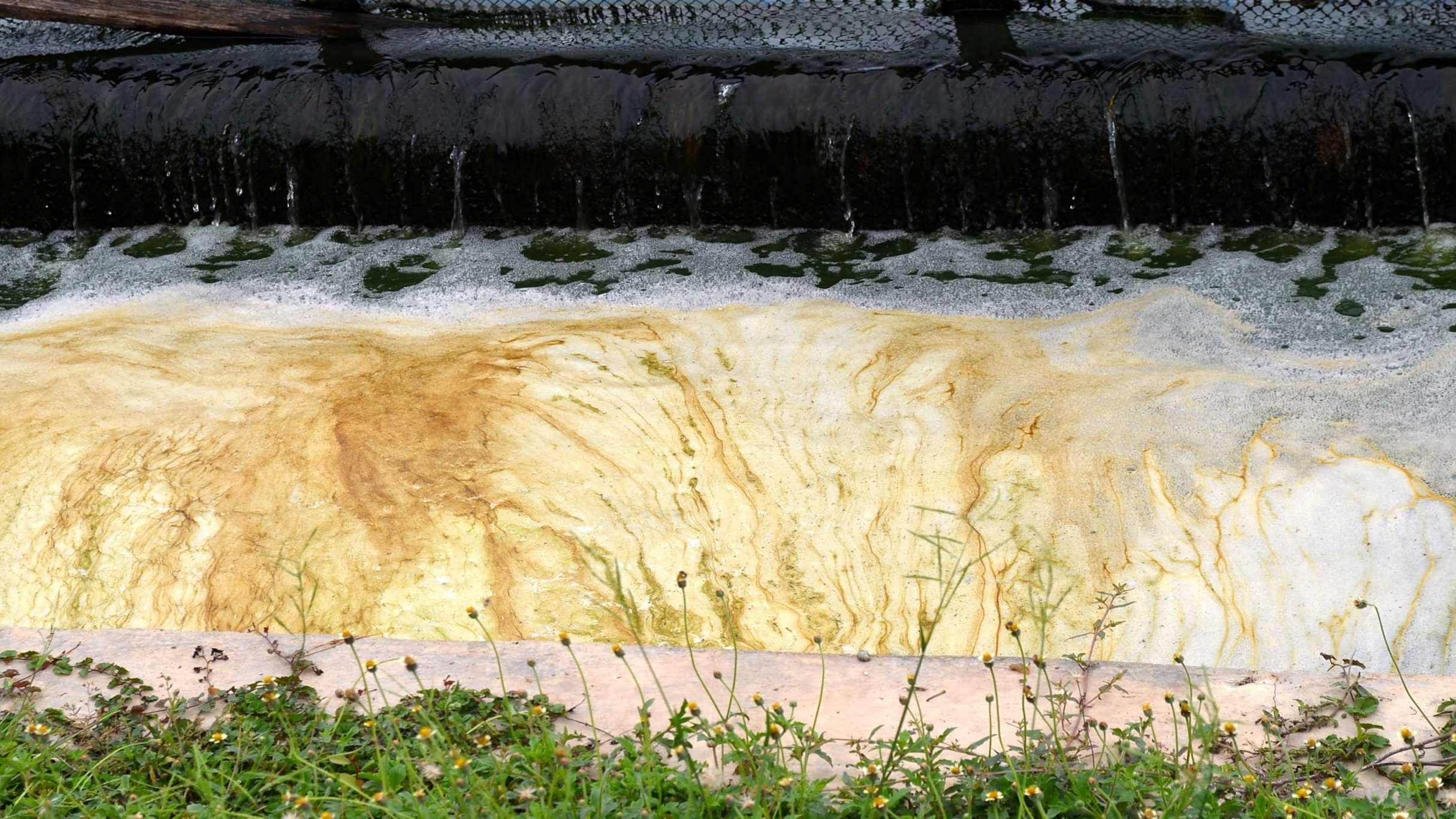In aerobic, biological wastewater treatment, a distinction is made between the so-called activated sludge process and the biofilm process. Depending on composition, freight, required cleaning results as well as local space conditions and climatic conditions, PWT selects the optimum wastewater treatment for your needs from the large range of processes.
activated sludge process
In activated sludge processes, the biomass (activated sludge) is suspended in the waste water to be treated and is supplied with oxygen by active aeration. This takes place in a reactor, the so-called activated sludge basin. Once the desired biological processes have been sufficiently completed, the biomass is separated from the biologically purified wastewater by a solid-liquid separation process and the (largely) biomass-free wastewater can be discharged or further treated. The amount of biomass in the activated sludge basin increases further and further due to bacterial growth, which is why part of it must always be removed from the system as so-called excess sludge and finally disposed of (sewage sludge disposal).
Classical activated sludge process
The waste water passes continuously through the clarifiers. The biomass is added to the wastewater to be treated upstream of the aeration tank. In the secondary clarifier, the biomass is separated from the treated wastewater by sedimentation and then it returns to the activated sludge tank.
Sequencing Batch Reactor (SBR) process
The SBR process is a variant of the activated sludge process, in which the wastewater is treated through a batch processing sequence. All steps necessary for the biological treatment of the wastewater do not take place in several separate reaction tanks, but take place in a chronological sequence in the same tank. This process is suitable for fluctuating wastewater volumes frequently occurring in industrial applications and for special local conditions.
Membrane Bio-Reactor (MBR) process
In the MBR process, the clarified wastewater and activated sludge are not separated by sedimentation, but by a membrane filtration module that is directly immersed in the activated sludge tank or installed dry. This allows the biomass to be retained almost completely, and the treated wastewater is also virtually free of viruses. In addition, higher biomass concentrations can be achieved in the activated sludge basin. Depending on further boundary conditions, the activated sludge tank can thus be made smaller. On the other hand, however, operating costs are higher than with the classic activated sludge process.
Biofilm process
In biofilm processes, the organisms settle on surfaces of the support medium and thus remain in a bioreactor. It is therefore not necessary to separate the entire biomass from the treated wastewater stream as is the case with the activated sludge process. For aerobic biological processes, air must also be supplied here, which can be done using various techniques.
The excess biomass is separated from the carrier by turbulence and removed from the system by means of a solid-liquid separation process, usually sedimentation. However, this process can be dimensioned much smaller than the activated sludge process due to the abovedescribed interrelationships. In addition, lower effluent concentrations can be achieved compared to the activated sludge process, but the process is more sensitive to high inflow concentrations.
Moving Bed Biological Reactor (MBBR) process
The MBBR process is a variant of the biofilm process. Here the support media are swirled by the introduction of air via aerators and at the same time the organisms are supplied with oxygen.
These support media can be used for new plants, but can also be used for plant extensions where the activated sludge process was previously used.
Trickling filter process
In trickling filters the waste water is trickled over a fixed carrier. There is no need for a separate air inlet via aerator; oxygen is supplied by convective transport of the ambient air. Due to the relatively simple and robust plant technology, the process is popular in emerging countries as an energy-efficient solution for biological wastewater treatment. It can also be used for nitrogen elimination after a high-load carbon reduction stage.
Fixed Bed Reactor (FBR) process
In the FBR process, the carriers are firmly fixed and the wastewater to be treated flows around them. Active aeration is necessary. FBR is frequently used in container plants.
